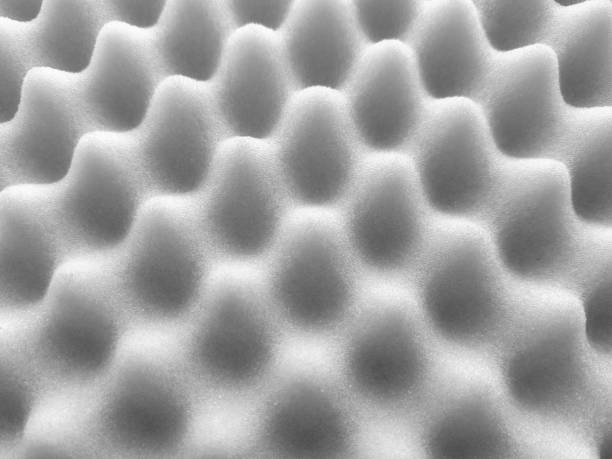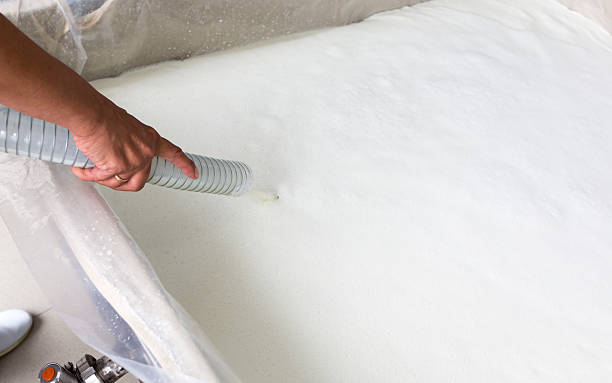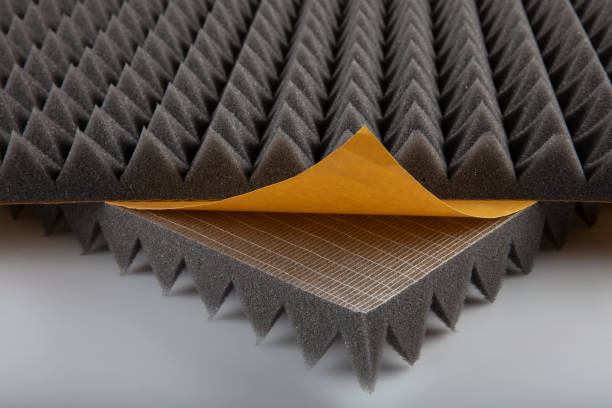Preface
Foam production is an interesting process that involves the conversion of raw materials into a multipurpose product in the market. Foam is used in soundproofing and insulation, cushioning and packaging, and many other uses because of its special characteristics. The process involves several stages, namely, preparation of the material, mixing, expansion, and curing stages, all of which are critical in defining the properties of the foam. In this blog, we will discuss the process of foam manufacturing and how these steps contribute to the creation of the foam.
What is Foam?
Foam is a material that is formed by the dispersion of a gaseous phase in a liquid or solid matrix. It is used mainly for its low density, thermal and acoustic insulating as well as cushioning capabilities. Foam has been around for thousands of years, but it was not until the twentieth century that foam products became commercially feasible due to the development of chemical technology. Foam products are used in simple objects such as packing materials, furniture and insulating materials and in other complex uses such as sound absorbing and medical uses.
Foam is characterized by the presence of many small air pockets or gas bubbles within the material. These bubbles are what makes foam light and flexible in nature. Foam is of different types and each type has its own characteristics. For instance,
rubber foam plate is highly appreciated for its strength and ability to provide shock absorption, which makes it suitable for use in products such as mattresses and seals. Through the years, foam has emerged as an essential component in various industries due to its versatility and uses.
How Is Foam Manufactured?
Foam production is a process that takes several stages whereby raw materials are converted to the foam end product. Every stage is important in defining the foam characteristics that include density, flexibility, and strength.
Raw Material Preparation: The First Step in Foam Manufacturing
The first process in foam production is the compounding of the materials used in the production of the foam. This entails choosing the right base material which may be polyurethane resins, rubber compounds or polystyrene depending on the type of foam that is required. The components are then weighed and blended to achieve the desired characteristics of the foam, density and stiffness. The materials used in the manufacture of rubber foam are rubber polymers, blowing agents and curing agents.
The nature of the feedstock determines the properties of the foam. For example, foam rubber used in insulation must be of right density and flexibility to meet the required performance. The preparation phase also includes the choice of additives which can be colorants, flame retardants or anti-microbial agents depending on the desired characteristics of the foam. Once the raw materials are properly selected and mixed, they are then ready to proceed to the next step.
Mixing and Blending: Creating the Foam Mixture
After that, the raw materials are blended together to obtain a uniform foam mixture in the process. This step is important, as it will make certain that the foam will have the same characteristics all over. The mixing process includes the addition of the base material, additives and the blowing agents which are chemicals that cause the formation of gases within the mixture. In the case of rubber foam, they may be those that enable the formation of air pockets without compromising the elasticity and tensile strength of the compound.
It also makes it possible for the chemicals to react in the right manner so as to produce the foam structure. As for the foam rubber, the mixture will be more often designed to be more durable and to be able to withstand various wears. It is important to blend the ingredients in a controlled manner to ensure that they are not blended for too long or for too short a time so as to produce the required quality of the final
rubber and foam supplies. Once the mixture is properly blended, it is ready for the next step: the step of adding the blowing agent.
Introducing the Blowing Agent: Expanding the Mixture
The blowing agent is one of the most important ingredients in the process of foam making. It is involved in production of bubbles that provides foam with its lightness and structure. Depending on the type of foam, the blowing agent may be a chemical that liberates gas from being heated or a physical gas which is incorporated during the process of production. As for rubber foam, the blowing agent is a critical variable that must be regulated to allow the foam to have the right measure of stiffness as well as to remain light enough to be used as an insulating material.
The expansion of the mixture is a very sensitive procedure. If the foam expands excessively it becomes weak and if it expands too little, the final
foam rubber products is a heavy and poor performing one. In the case of the
best sound deadening foam, for instance, the blowing agent should produce cells that ensure the foam works well in reducing sound. In the expansion phase, the formation of the final properties of the foam, namely its strength and thermal conductivity, is determined.
Heating and Curing: Setting the Foam Structure
Once the foam has risen it is then baked and solidified to lock the foam in its shape. Baking is a chemical process that cause the foam to become rigid, strong and stable. This step is specifically important for rubber foam since the rubber polymers used need to reach specific curing temperatures in order to obtain the right properties. Curing also assist in the shaping of the foam making it appropriate for uses such as insulation rubber foam in civil engineering.
The heating process should be well monitored to avoid over heating or under heating since both conditions are detrimental to the proper performance of the foam. For example, it is possible to have a foam that is too hard and brittle due to over-curing, while if the curing is done for a shorter time, then the foam will be too soft. When the foam has reached its final state of curing, it will have achieved the required rigidity and flexibility, to be molded into the required shape.
Molding and Shaping: Creating Desired Forms
In this step the foam is shaped to the required form and size. Foam can be manufactured in a flat sheet, block or in any other shape that is required for use. For instance,
sound suppression foam is typically sold in tiles or panels to be used on walls and ceilings, while rubber foam comes in rolls or special shapes for sealing and insulation.
The final step in the production of the foam is to pour the mixture into molds, which are meant to provide the foam with its final form. The molds can be quite different depending on the type of foam that is being manufactured. For example,
nbr rubber, which is resistant to oil and chemicals, is normally molded in sheets or strips for use in industries. The molds help to achieve the required size and porosity of the foam for its further application.
Cooling and Trimming: Finalizing the Foam Product
Once the foam has been molded, it has to be cooled so that it can harden fully. This is a critical step because the foam must be cooled to prevent distortion of the foam thus affecting its shape. After cooling, the foam is cut into shape to remove any extra foam and to fit within the right dimensions and size. Trimming also helps in the preparation of the foam for packing or any other subsequent process.
In
foam rubber products, trimming is critical in order to make the edges of the foam free from defects. This step is important to develop good products that will produce good results in the market. Following the trimming process, the foam is prepared for quality control tests that will determine its performance as well as safety.
Quality Control: Ensuring Consistency and Performance
Foam manufacturing cannot be complete without quality control. The foam is then molded, cured and trimmed and then subjected to a series of tests to determine its suitability for use. Some of these tests may comprise density, elasticity, thermal insulation and sound absorption tests. As for the rubber foam products like the insulation rubber foam and the foam rubber used in industrial applications, the durability and the wear resistance tests are also significant.
Quality control process is used to ensure that each batch of foam produced is equal in performance to the other. Any problems that are found during testing are rectified through reworking the batch or through disposal to ensure that the final product is of the highest quality. In the case of
foam rubber supplier FUNAS, quality control is a matter of utmost importance, and products undergo rigorous inspection to meet the highest standards. This is why FUNAS’s
rubber foam insulation materials are used by industries across the globe.
Customization Options: Tailoring Foam to Specific Needs
Another feature that characterizes foam manufacturing is the possibility of adjusting the foam product to a particular requirement. In terms of density, thickness, or even coatings such as fire or water resistance, manufacturers of foam can develop products suitable for almost any use. This is especially the case with industries that need foam with specific characteristics, for instance sound proofing for construction or the best sound
insulation foam for car applications.
In the case of such firms as FUNAS, therefore, customization is one of the major values being delivered. Depending on the customer’s needs, the company can create
nitrile rubber material for industrial purposes or
best sound absorbing foam mats for quieter settings.
Environmental Considerations: Sustainable Foam Manufacturing
Like most industries, the issue of environmental conservation is slowly finding its way into foam production. Companies are also trying to cut their carbon footprint through use of environment friendly materials and products. Most
foam suppliers including FUNAS are embracing environmentalism by using environmentally friendly chemicals during the manufacturing process and recycling of wastes to produce new products.
The foam industry is also applying efforts to decrease energy use and greenhouse gas emissions in manufacturing processes. For example, closed cell foam technologies that are energy efficient and have longer life cycle is being used to achieve sustainability objectives. Foam manufacturers are making sure that their products meet the needs of their customers, as well as the needs of the environment through the use of technologies and practices that are friendly to the environment.
Different Types of Foam: Exploring the Option
Foam can be of different types depending on the type of material used and the purpose it will be used for. Some of the typical foam materials are polyurethane foam,
nitrile rubber foam and expanded polystyrene foam.
-Polyurethane foam is widely used, in mattresses, automotive cushions, etc. It is versatile, and can be made for varying thickness, which is perfect for cushioning and warmth.
-Nitrile rubber foam is highly appreciated for its oil and chemical resistance and is widely used in industries and automobiles where the product has to endure high levels of wear and tear.
-EPS foam is light in weight and has good thermal resistance and is used in packaging material and construction material. It is cheaper but not as long-lasting as other types.
Each type of foam serves a unique purpose, whether for comfort, insulation, or specialized industrial applications, providing best sound insulation foam and
foam insulation solution and tailored to specific needs.
How Does Sound Proof Foam Work?
Soundproof foam is effective in the reduction of sound because it is designed to trap sound waves and minimize the bouncing and passing through of sound in a particular space. When sound waves strike the foam, the structure of the material absorbs the energy and turns it into heat and thereby dispersing it. This process minimizes echoes, reverberation, and other sounds that are not wanted in areas such as home theaters, recording studios, and offices.
Soundproof foam is most effective when used as a dense material with thickness and the right type of materials used. Thicker densities of foams are effective in sound insulation while thin densities are effective in sound absorption in a room. To achieve the best results, several types of foam can be employed, including acoustic foam and bass traps to address both high and low frequencies.
Experience the Best Sound Deadening Foam with FUNAS
FUNAS is a renowned company in the production of sound deadening foam and is well equipped to deliver quality foam products in the market for construction, automotive and HVAC industries. FUNAS was founded in
2011 and has gained popularity due to the application of micro-cellular foaming and individual formulations, which guarantee high performance and durability.
FUNAS ensures that all its clients across the globe get the right solutions for thermal insulation or soundproofing as per their requirements. FUNAS’s foam and related products are energy-efficient and sustainable, and FUNAS employs environmentally friendly materials and processes to manufacture the foam. Whether you require
wholesale foam rubber or
polyurethane foam pipe insulation wholesale, FUNAS has the knowledge and the products to offer the best solution.
Conclusion
Foam production is a technical and creative procedure that plays an important role in different sectors globally. Every stage of the process of manufacturing of the foam is vital and has an impact on the final properties of the foam, including its strength, elasticity, and insulating capabilities. From the flexibility of polyurethane foam, the strength of nitrile rubber foam to the thermal conductivity of expanded polystyrene foam, foam has numerous uses.
The future of foam manufacturing is bright as technology advances with innovations in sustainability, automation, and new material types. From using it in packaging to insulation to various unique uses such as sound proofing, foam is going to remain an important commodity in many industries.
FAQs
-
-
Yes, sound-absorbing foam reduces noise by trapping sound waves in its porous structure, converting sound energy into heat and minimizing echoes and sound reflection.
-
-
Where to Purchase Foam Rubber?
- Foam rubber can be purchased from specialized foam suppliers, online stores, or directly from manufacturers that offer customized foam solutions for various applications.
-
-
Is Foam Made of Plastic?
- Not all foam is plastic. While some foams are plastic-based, like EPS foam, others are made from materials like rubber or polyurethane, depending on the intended use.
-
-
How Does the Density of Foam Affect Its Properties?
-
Higher-density foam is firmer, more durable, and better at blocking sound or providing insulation, while lower-density foam is softer and more flexible but less effective for soundproofing or insulation.
-
-
What Are the Safety Precautions to Be Taken During Foam Manufacturing?
-
Safety precautions include proper ventilation, handling of chemical agents safely, wearing protective gear, and following strict fire safety measures, as foam manufacturing often involves flammable materials.































































